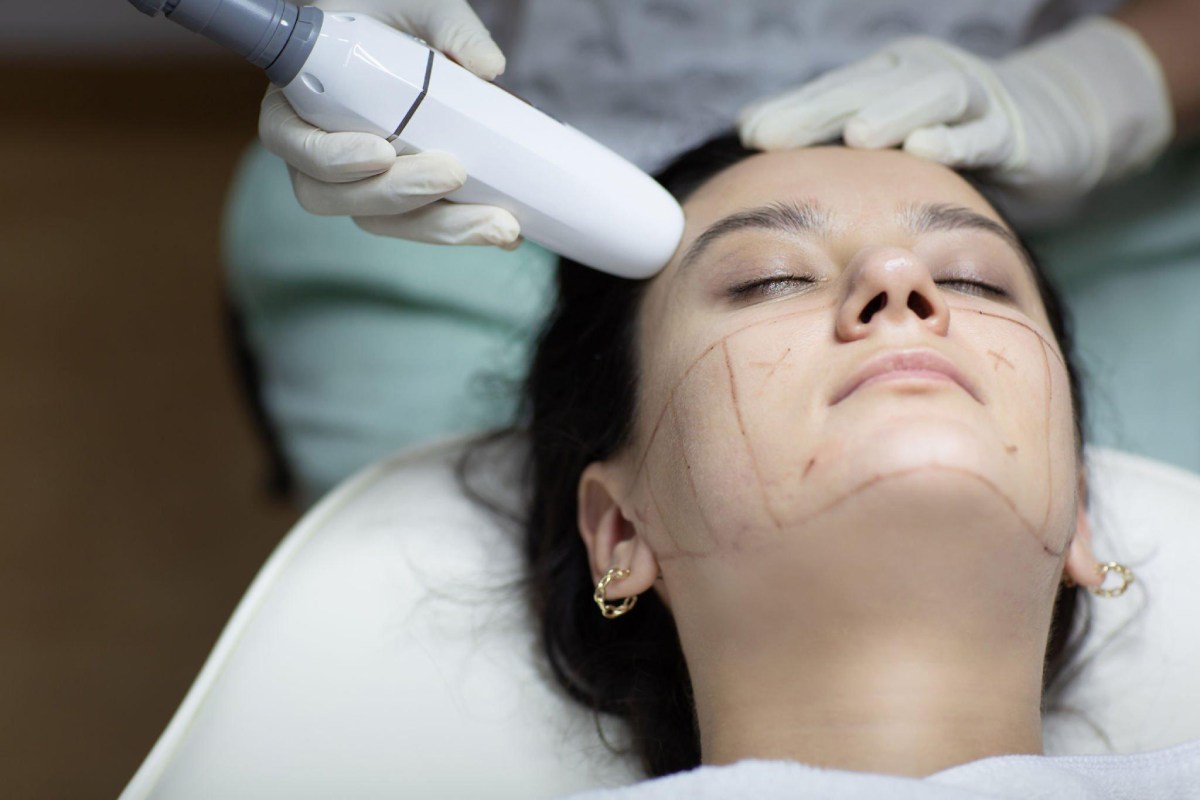No one is immune to the effects of aging. Wrinkles, sagging skin, and frown lines can undermine your physical appearance. And for some people, wrinkles make them appear older than they actually are. If you’re looking for a way to improve your appearance by eliminating frown lines on your face, you’re not alone.
Every year, millions of people undergo a non-surgical facelift to alter their skin.
Fat injections and dermal fillers add volume to your face creating a smoother, younger look.
Table of Contents
What Is a Non-surgical Facelift?
It combines non-surgical and minimally invasive procedures to refresh and rejuvenate your skin. This technique is safer than a surgical facelift because it does not necessitate general anesthesia, large incisions, or overnight hospitalization.
With a procedure, you will be in and out of your doctor’s office with minimal downtime and post-op discomfort. The best part about a non-surgical facelift is that you will enjoy impressive results without ” going under the knife.”
How Is a Surgical Facelift Different From a Non-surgical Facelift?
A surgical facelift, also called rhytidectomy, relies on incisions in the face to tighten the skin on your neck and face. During this procedure, your surgeon will trim excess skin and tighten internal tissues to achieve a younger look. Of course, this option does deliver long-term results.
A non-surgical facelift utilizes PDO threading and fillers to address facial symmetry and wrinkles. Specific actions include restoring volume, softening wrinkles and lines, and lifting the brows.
Who Qualifies for Non-Surgical Facelift?
Anyone with concerns about aging skin or any of the following issues qualifies for a non-surgical facelift:
- Thin lips
- Sunken cheeks
- Wrinkles, including marionette lines and crow’s feet
- Dark shadow around the eyes
- Loose jowls and sagging skin
However, experts recommend that people with pre-existing skin conditions refrain from a non-surgical facelift until their condition(s) has been addressed. Examples include:
- Skin rashes
- Skin burns from radiotherapy
- Active acne
- Eczema
- Cold sore outbreaks
Components of Non-Surgical Facelift
Each type of non-surgical facelift is customized to meet the patient’s unique needs. The three basic components of a non-surgical facelift include:
1. Dermal Fillers
Dermal fillers are the main source of non-surgical facelifts. They constitute smooth-gel injectables that promptly restore volume under the eyes, along the cheeks, lips, and temples. These fillers will plump the recessed areas on your skin to generate youthful vibrancy.
2. BOTOX® Cosmetic
BOTOX® Cosmetic is the ideal solution for unmatched wrinkle reduction. By relaxing the muscles in your skin, BOTOX® Cosmetic succeeds in smoothening forehead creases, crow’s feet, and frown lines. Its benefits can last up to three months to six months (depending on how your body processes this product).
3. Fat Injections
This procedure begins with liposuction, whereby your specialist will obtain fatty tissues from a different part of your body. After cleaning and processing the fat cells, the surgeon will reinject them into your face for enhanced facial volume. Fat injections are effective and can last for years.
FAQ
Equipping yourself with all the facts about a non-surgical facelift will help you transition smoothly from the doctor’s office to your everyday life. Keep reading to find out the most frequently asked questions about non-surgical facelift and their answers.
What are the risks?
The potential risks and complications of a non-surgical facelift vary with the method chosen. However, most of these procedures are generally safe and present limited side effects. They include:
- Dry skin
- Bruises
- Infection
- Skin burns
- Skin redness
How long do the results of a non-surgical facelift last?
Results depend on the method employed. Dermal fillers and BOTOX® Cosmetic are not permanent. Dermal fillers can last up to two years (depending on the specific product) and BOTOX® Cosmetic up to three to six months.
Fat injections are more long-term and can last for several years.
How can I maintain the results?
Regular checkups and follow-up treatments will help you maintain the results of a facelift. Lifestyle habits that can help you achieve longer-lasting skin benefits following the procedure include:
- Quitting smoking
- Staying away from intense sun
- Cleaning your face with a moisturizer every day
- Using facial products laced with antioxidants
What is the cost?
A non-surgical facelift cost will depend on the complexity of the procedure and other related expenses such as facility fees and surgical fees.
How many treatment sessions will I need?
You will need four treatment sessions for the entire procedure to be completed effectively. With each session, you will begin noticing changes in your facial appearance. Each session typically takes 30 minutes, which is quite manageable and comfortable.
What is the recovery time for a non-surgical facelift?
It does not often have any downtime. You can resume your daily life functions immediately after the procedure.

